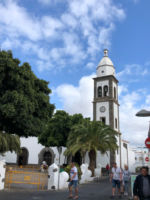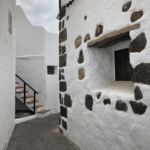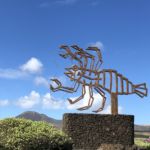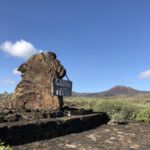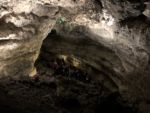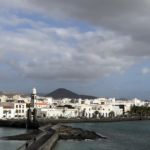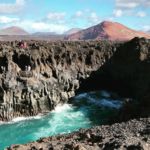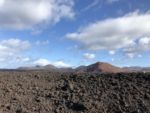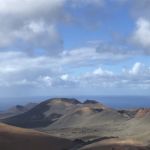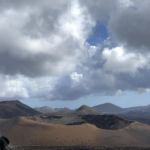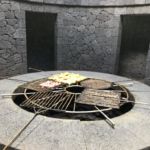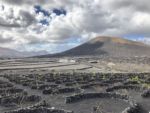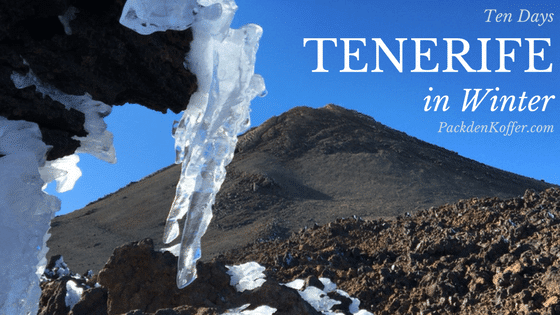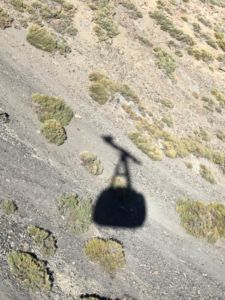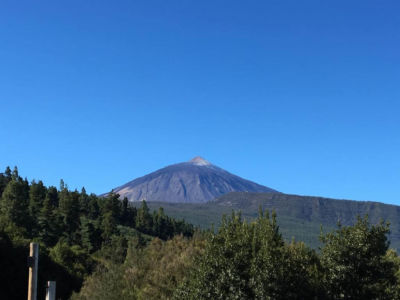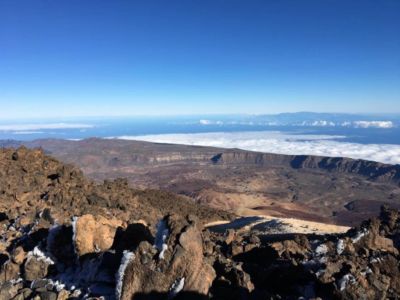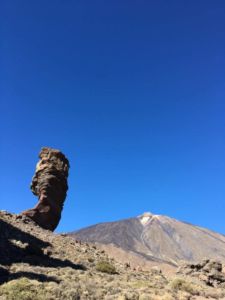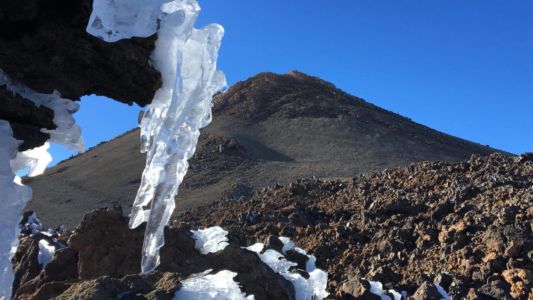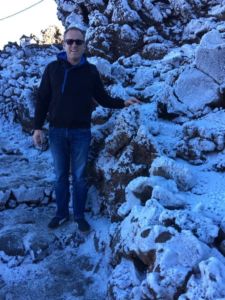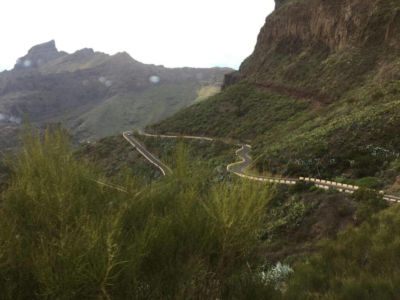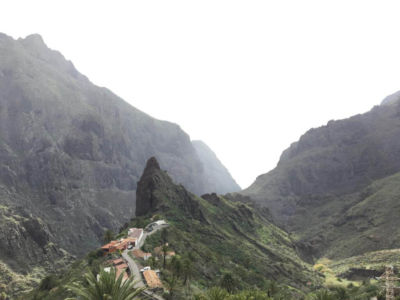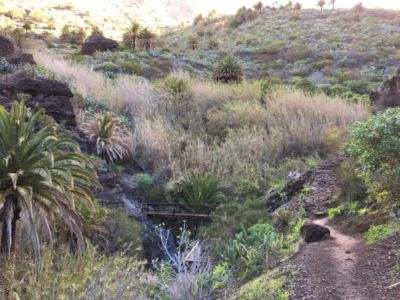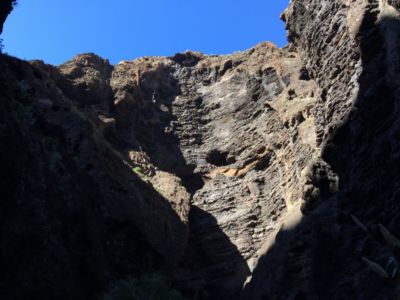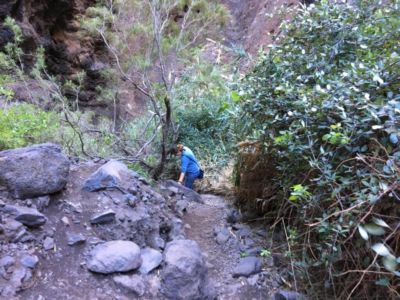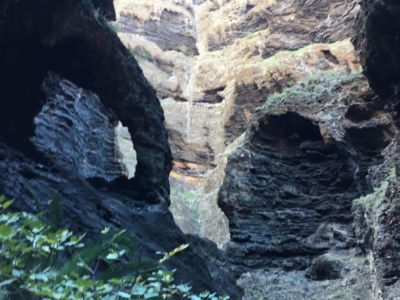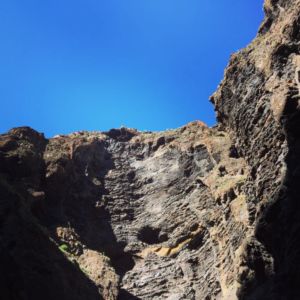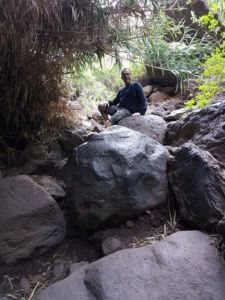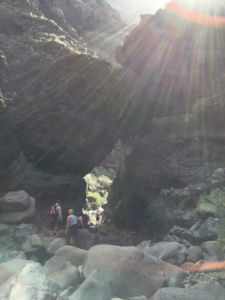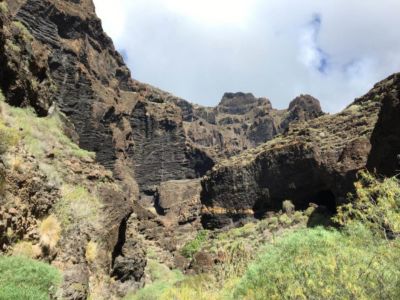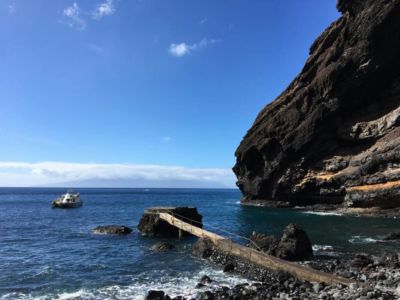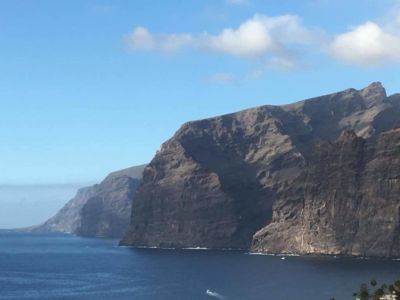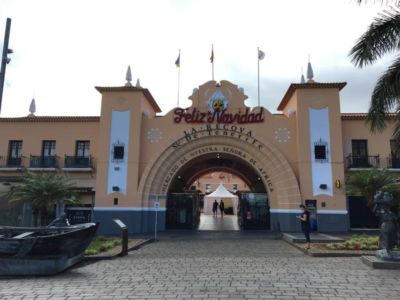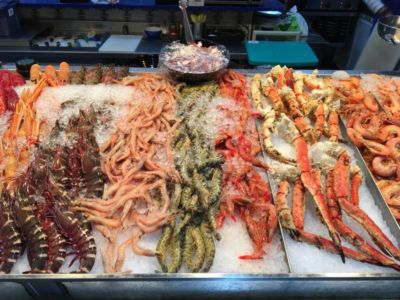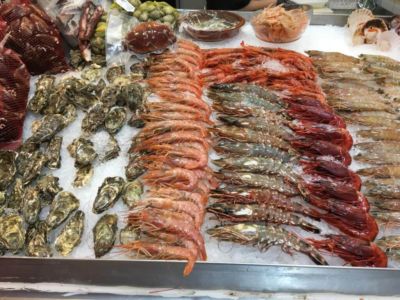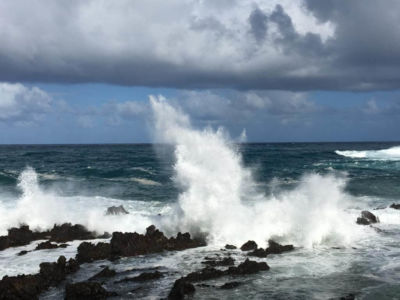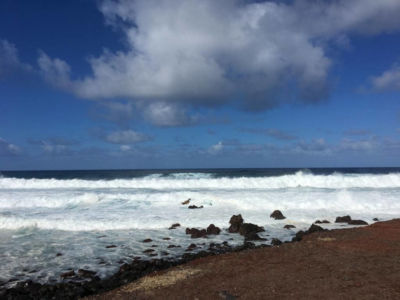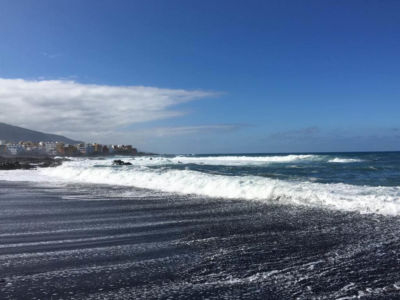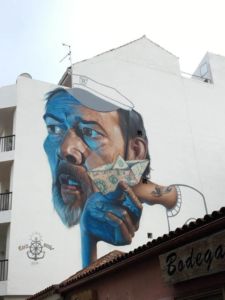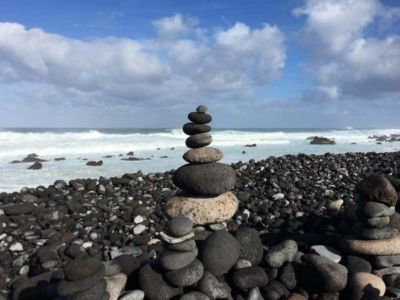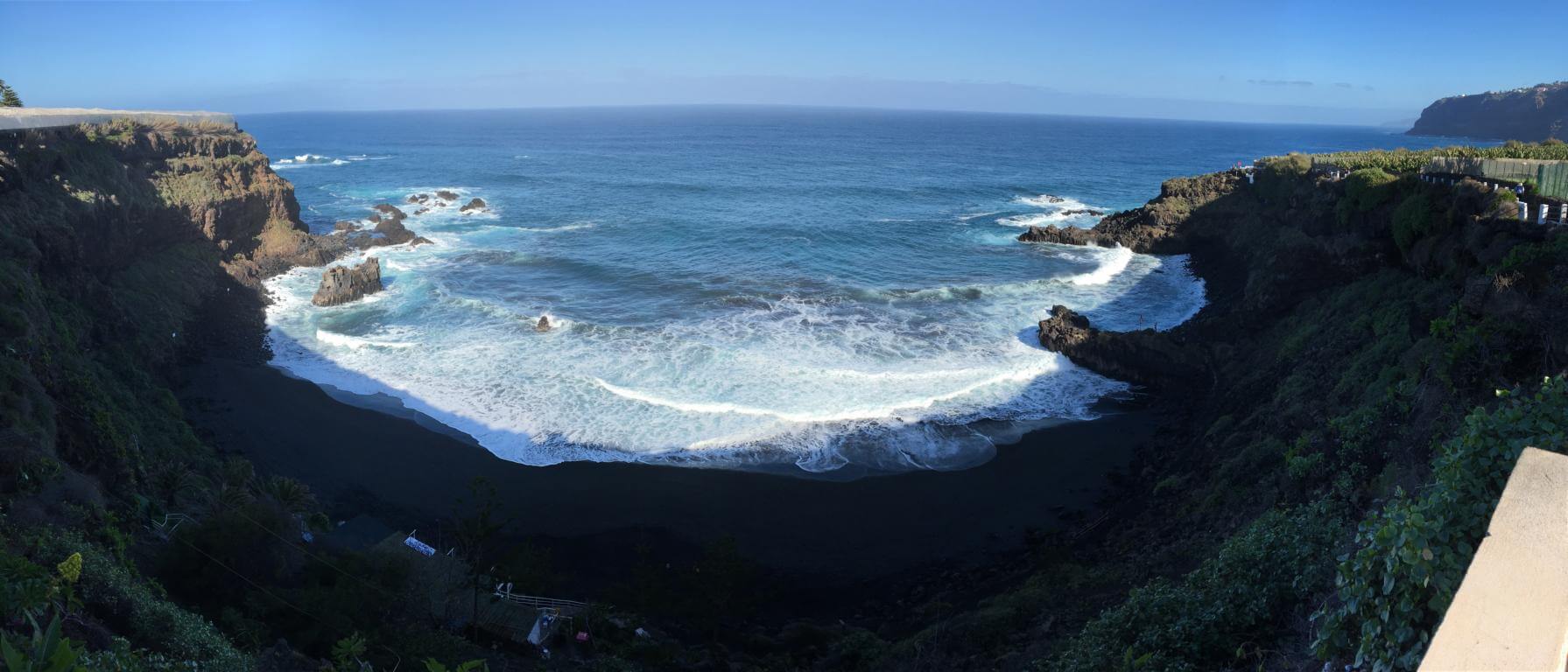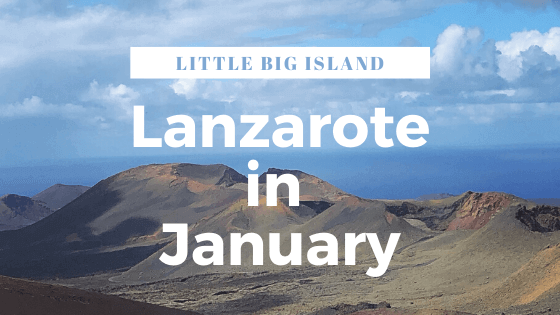
Lanzarote in January
Lanzarote in January – a great volcanic island
Lanzarote – the barren volcanic island in the Atlantic Ocean with its incredibly exciting landscape. Our destination in January 2020 and a great recommendation for all sun lovers, who would like to take a few warm days in winter. Lanzarote in January is a really beautiful holiday destination. The island belongs to the Canary Islands and is the fourth largest island in the archipelago after Tenerife, Fuerteventura and Gran Canaria. In total, we had one week on the spot in order to get to know Lanzarote in January. By the way, did you know that the whole island was declared a biosphere reserve by UNESCO in 1993?
Is one week enough to explore the island?
We have seen quite a lot of Lanzarote. One week simply passes much too fast and Lanzarote offers a lot for such a “small” island. With two or three days more, surely one or two more relaxing beach days would have been added. Bathing in Lanzarote in January is really possible with some effort, whereby you should always pay attention to the local advice for your own safety. The currents at the coast are partly very dangerous and from time to time there are reports of serious accidents. By considering these tips, you can spend some very nice days on the beach. The sun is warm in the midday hours. A small tip: buy sun cream before you go to Lanzarote (even in January). As it is the case in many other holiday regions, when buying it during the holiday, you feel like “robbed”.
How big is big?
Lanzarote is relatively small with a length of approximately 58 km (north-south) and a width of approximately 34 km (east-west). Nevertheless we decided to book a rental car for the whole week. The really low price of about EUR 75,- made our decision very easy. By the way, we made the booking in advance via internet in Germany, which was the right decision according to the local prices of the rental car companies on the island. Important for us: because of only small price differences, we chose the fully comprehensive insurance without excess as a criterion.
Where to in Lanzarote in January?
In principle there are three bigger touristic places, which also offer good possibilities in the evenings with promenades, bars and restaurants. The biggest place is Playa Blanca at the south, then Puerto del Carmen at the south of Arrecife and Costa Teguise slightly at the north of the island capital. By the way, the only airport of the island is located relatively centrally at Arrecife. Of course, there are much more places that offer rather small accommodations.
Driving on Lanzarote
Those who get along well in small villagesl and also have no problems in cities like Hamburg or Berlin will not find a challenge in Lanzarote. It might be advisable to save an offline map of the island on your mobile phone at Google Maps before your holiday (check here my article, which I wrote for you: how to create Google maps offline maps). With offline maps you save your data volume. The Canary Islands belong to Spain and therefore to the European Union. For you (with an EU sim card) it means that you will have no problems with data roaming.
What to do on Lanzarote?
Even though Lanzarote is not a very big island, it can be felt to do many things. If you are sporty and like surfing, you will surely find great waves in many places. In the air you can paraglide. You like nature and you are interested in volcanoes? Then you are in good hands on Lanzarote. The Timanfaya National Park will surely be one of your highlights. You love art and culture? Then you will have a few places to go on Lanzarote with the many architectural treasures and works of art of the artist César Manrique. The good Mr. Manrique has shaped the island during his lifetime and has achieved, for example, that a moderate tourism is consistently implemented and that the development may only be in the traditional style.
The north of Lanzarote
In January on Lanzarote the focus will certainly be more on culture than on beach. In the north of the island you will find some interesting places – mainly buildings by the same Cesar Manrique, which really fit into the landscape very well.
Only half an hour north of Teguise you will find the cactus park “Jardin del Cactus”. Here you will find a very, very big cactus park. This is certainly not everybody’s cup of tea but for “on the way” it is a nice stopover. A small tip: there is a kind of combi-ticket in different versions, with which you can see up to six attractions.
Save a little money – buy a combo ticket
If you are interested in all attractions, you can save some money and time with the ticket. Especially in the morning there can be (short) queues at some points. The bonus cardholders were then usually preferred to be let in, because you only had to “stamp” the ticket.
From the Jardin del Cactus you go to the “Jameos del Agua”. Here an easy descent into a lava tunnel awaits you. In the depression a lake has formed in which albino crabs live. Nice to look at, but also very quickly beautiful to look at. The cafe on the other side of the tunnel with a view to the lava tube was a bigger attraction for us. The highlight for us after the cafe was the incredibly great pool in the huge lava bubble (swimming not possible!) and the concert hall, which was built into another lava tunnel. The contrast of the dark lava and the white pool with the almost unnatural blue water was surely one of the most outstanding impressions.
Going to the centre of the earth. At least under Lanzarote.
At nearly the same height to the Jameos del Agua there is the “Cuvea de los Verdes”. If you come from the south, you can visit almost all of these destinations comfortably in one day. The Cueva de los Verdes is a public section of a several kilometres long lava tunnel and cave system. The cave can only be visited with a guided tour. We strongly recommend a visit – especially because of the great surprise effect at the end of the tour! There are also regular concerts in the cave. Maybe also an exciting location.
From earth to sky
The three locations are in the north of the island, as well as the “Mirador del Rio”, which is a panoramic viewpoint over the offshore island of La Graciosa. As if by a miracle, the Mirador del Rio was also created by a famous artist of the island. You may guess who it was. As a tip in the truest sense of the word “on the edge”: while returning from the Mirador del Rio, drive back from the parking place at the upper end via the LZ-202. The small road, enclosed in stone walls, leads more or less directly at the steep slopes back to the inland. The view is definitely very nice.
Big view for little money?
For those who want to save money, it is also possible to look over from the road directly to La Graciosa without paying any entrance fee for the panorama point. Alternatively, but much less beautiful: the Mirador de Guinate, free of charge and six kilometres west of the Mirador del Rio. Via the LZ-202 you will pass this point almost automatically.
Loneley bays and helpful stone circles – it is pretty windy on Lanzarote in January
By the way, you will drive northwards through a great volcanic landscape directly along the coast. On the way you will also see a few beautiful bays. Interesting and really helpful at the beaches of the bays are the small stone circles, which are a good wind protection with the permanent wind. Contrary to the tourist beaches in the south you can find really lonely bays here. Insider tip for sunbathing – Caleta del Mojon on the LZ-1 direction Órzola. There is a very small parking lot for about 15 cars on the left side of the road. When full it is full! Swimming will not work because of the lava rocks and current.
From Órzola, a more or less dozy fishing village with a few rustic (fish) restaurants in the north, there is also the only regular ferry connection to La Graciosa. According to other travellers, La Graciosa is a place where you really have to love solitude. There is not much to see on the island.
There is much more to see in the little village Haria. The place in the valley of the “1000 palms” looks amazingly green in contrast to the many other places. Here you will also find the first house of Cesar Manrique and above all a great handicraft market, which really lives up to its name. The market is always on Saturday mornings.
Arrecife and Teguise – the centre of the island
Almost in the middle of the island Arrecife is located on the east coast. The islands capital has almost 50.000 inhabitants and is also the destination port for the big cruise ships. We found Arrecife rather unspectacular. There is a small pedestrian zone where you can get a coffee in one of the street cafés. At the end of the pedestrian zone, one can walk over to the old fortification “Castillo de San Gabriel”, which today accommodates the local history / island museum. (entrance fee 3 Euro). The view from the museum towards the city is beautiful. In the museum all descriptions are only in Spanish – this is just for information.
From the fortress you can walk along the promenade to the small fishing port, where there is also a lot of activity in the evening. There are a lot of bars where you can enjoy the evening in a nice atmosphere. A few metres further away but still within walking distance is the new marina of Arrecife. Architecturally interesting but less visited, this corner of the city seems very sterile.
By the way, modern art also has a centre in Arrecife – the “Castillo de San Jose”. The museum visit is also included in the “Bonoticket”. With the car, you can also park relatively central in Arrecife at the marina or the bigger parking place in front of it. From Arrecife you can drive perfectly to Teguise, where the biggest market on the island is (Saturdays).
Even without the market, Teguise is an exciting place where you can find an “old town” and several small shops. From Arrecife you drive only 20 minutes to Teguise. On the way there in Tahiche you will also find the Cesar Manrique Foundation, which is certainly one of the architectural highlights of the island. The building was one of the artist’s residences, which was so perfectly integrated into nature. You walk through lava bubbles that have been transformed into living rooms. Note: the building complex has to be paid separately (adults 8 Euro) and is not included in the “Bonoticket”. In January on Lanzarote as in the rest of the year nevertheless a clear recommendation!
South of Lanzarote
The south of Lanzarote is fully developed for tourism. Playa Blanca is the centre here, from where you can also take the ferry to Fuerteventura. There is a promenade with many restaurants, bars, etc. Beautiful is the Marina Rubicon, where also regularly a big market takes place. At the marina you can also enjoy an ice cream in January.
Our destination in the south was after a short visit of Playa Blanca then the Costa de Pagagayo with a total of seven beaches. All bays are relatively easy to reach. By car, you drive on a gravel road through the national park (toll 3 euros) to the beaches that are so wide that you will definitely find a place in January. We spent one day here (Playa Blanca and beaches).
The west of Lanzarote and the highlight of the island – the Timanfaya (volcano) National Park
For the real highlight of the island you should plan at least half a day. Before our visit to Timanfaya National Park we visited the (free) cliffs of “Los Hervideros”. If the weather is good or the sea is calm it is rather less spectacular there. Really impressive is this point with strong sea waves, when the surf of the Atlantic Ocean hits the coast of Lanzarote with full power. Independent from the waves, by looking to the north-east, you can already see the national park. At this point you still have the possibility to take the LZ-703 a few kilometers further north to the village “El Golfo”, where you can also visit the green lagoon “El lago Verde”. We have left out these places. If you should go there, write us what we missed! Our focus that day was clearly on the national park, which is also only 20 minutes away from Los Hervideros.
The Timanfaya National Park and the volcano chicken
The visit of the national park is divided into at least two parts. Right next to the parking lot and below the restaurant, employees of the national park demonstrate again and again which kind of energy is still in the ground today. After the demonstrations you will experience the real highlight. With a bus (starting right in front of the souvenir shop), you will be driven on a nearly 14 kilometres long way through the national park. There are repeatedely some stops where you can get a lot of information about the origin and the last volcanic eruptions. Fortunately, the last eruption from the year 1824 is already a blink of an eye in the history of the earth time. The explanations are in Spanish, French, English and German.
Volcano – bbq – chicken
After the tour you have time to enjoy the breathtaking landscape around the restaurant. You can also eat a chicken grilled by volcanic heat in the restaurant. You can see how it looks like at the entrance of the restaurant. The taste is ok, but nothing special. The way of preparation is the interesting thing about this dish. Insider tip: below the restaurant on the right side is a small (public?) grill. On our next visit we will simply take our own sausages with us. It is worth to try it. Do not forget mustard! 😉
Side note: at the exit of the national park you could take a camel tour into the park. We spared ourselves and the camels this tour.
You can complement your visit to Timanfaya National Park with a visit to the Timanfaya Visitor Centre, where you will learn many more interesting details about volcanism in Lanzarote. Fortunately, the descriptions are in several languages. Unfortunately the outdoor area was closed during our time. For our next holiday on Lanzarote we will definitely go for a hike in a volcano – park here and start walking. The visit of the national park was really the highlight for us. Somehow we seem to have a tendency to volcanoes – after Etna in Sicily and Teide in Tenerife.
Finally….
On the way back from Timanfaya National Park back towards Costa Teguise there is (with a small detour) the tiny place La Geria. On the surrounding slopes of the village wine is grown, which you can also buy in the wineries of the village. Due to the wind, the vines are placed in stone walls in basins. Extremely elaborate!
We would be pleased if the article has given you a first small insight and impression of Lanzarote. We were very positively impressed by the great, unique nature and landscape. Sometime we will surely visit this really extraordinary place again, just to relax for a few days.
One week Lanzarote – not only in January – we can really recommend it!
The following travel guides have also been very helpful offline. If you buy through the following affiliate links you support our hobby. The price at Amazon is not affected by this.
And this was one of our offline tour guides that we can recommend with a good conscience:

